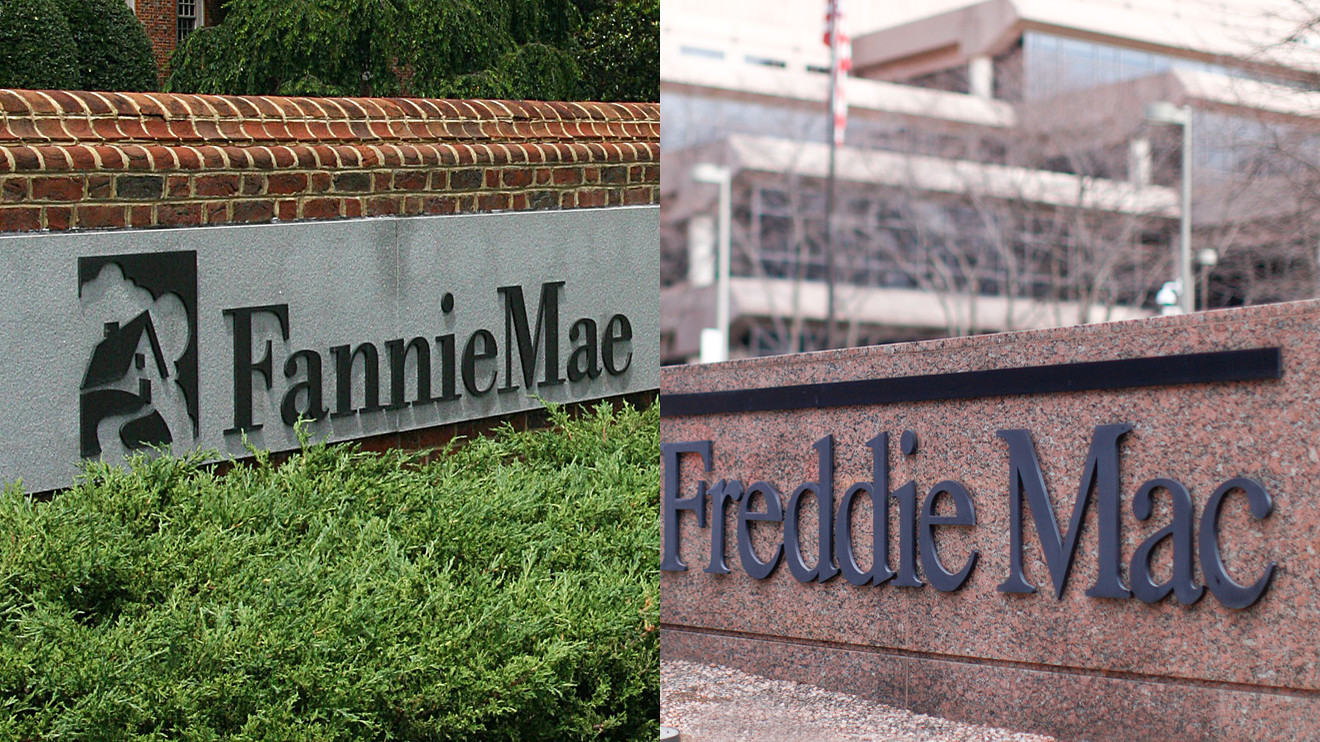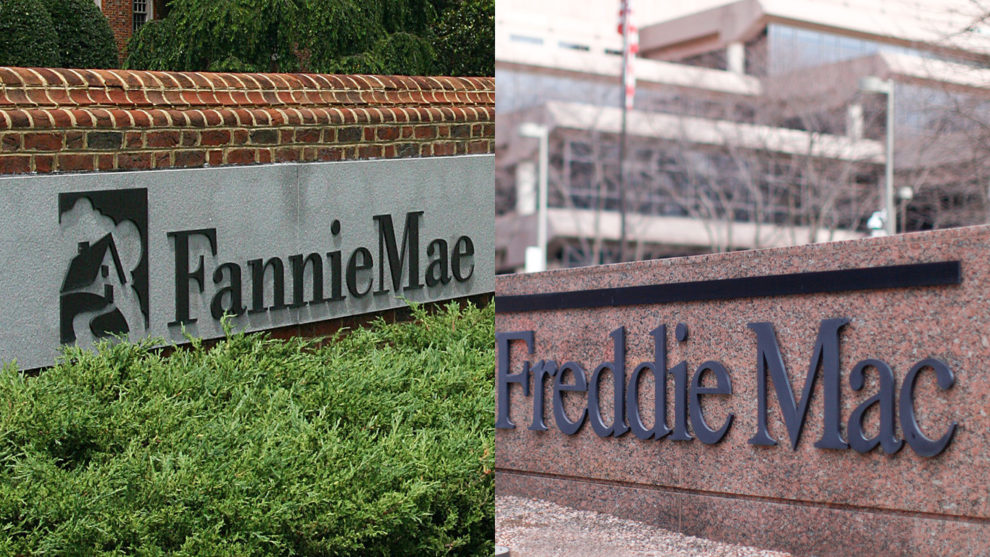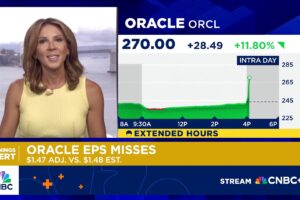
The Trump administration wants to overhaul the country’s housing-finance system.
The Treasury Department and Department of Housing and Urban Development have proposed broad changes that could affect all players in the system, from mortgage borrowers to lenders to securities investors.
Here are some of the most notable recommendations:
Treasury and FHFA should work to recapitalize Fannie and Freddie
Ostensibly, the goal of any housing-finance reform would be to address one of the largest remaining legacies of the Great Recession: The conservatorship of Fannie Mae and Freddie Mac.
One of the key recommendations the Treasury department made in its plan was to work with the FHFA, the regulatory body that oversees Fannie and Freddie, to consider allowing each enterprise to retain earnings beyond the $3 billion in capital reserves they are now permitted.
The profit sweeps were initiated in 2012 to repay the federal government for the roughly $190 billion Fannie and Freddie received in bailout funds. All told, the two firms have now paid more than $300 billion back to the government, according to The Wall Street Journal.
Currently, any money earned in excess of that $3 billion is swept to the Treasury department. The specific timing and mechanics by which these sweeps would end has yet to be decided and will be determined with the Federal Housing Finance Agency (FHFA), senior Treasury officials said Thursday.
Also see: Why are green housing bonds not getting more love from ESG investors?
The lack of details regarding the profit sweep changes sends mixed messages, according to investment bank Cowen. “To us, this seems like it could be the next step for Treasury as it tries to figure out what to do with its preferred holdings,” Cowen wrote in a research note. “If Treasury intended to quickly deem the preferred shares as repaid, then there would be no need to discuss suspending the sweep as the sweep would no longer exist.”
However, Treasury Secretary Steven Mnuchin told Fox Business Monday that the end of the net worth sweeps could come as soon as September, pending negotiations with FHFA. “We expect in the near term we’ll have an agreement where we will allow both Fannie Mae and Freddie Mac to retain their earnings, which will be a significant increase in capital and a step in the right direction to us ultimately raising third-party capital,” Mnuchin said.
The net-worth sweeps have been a thorn in the sides of Fannie and Freddie’s investors for years now. Those investors scored a win last week when a federal appeals court overturned a previous ruling, thus clearing the path for the to trial court over the federal government’s sweeps. The court also ruled that the FHFA’s structure was unconstitutional. The case may ultimately end up in the Supreme Court.
Ending the net worth sweeps would not mean that Fannie FNMA, +7.56% and Freddie FMCC, +7.46% would necessarily stop paying any money to the federal government. In fact, Treasury proposed that the two enterprises continue paying a “commitment fee” after being recapitalized to maintain their access to the government’s preferred capital lines.
The plan also leaves the door open for other ways of recapitalizing Fannie and Freddie, including an initial public offering or the exercise of Treasury’s warrants for 79.9% of the enterprises’ common stock.
The federal government’s guarantee should be funneled through Ginnie Mae
One of the most notable changes the Trump administration has called for is Congress drafting legislation to create an explicit catastrophic backstop from the federal government for Fannie and Freddie.
To that end, the Treasury Department’s plan envisions a much-expanded role for Ginnie Mae, the government-backed firm that currently guarantees government mortgage bonds. Unlike Fannie and Freddie, Ginnie Mae does not buy or sell loans or issue mortgage-backed securities. Rather, it only provides a guarantee or “wrap” on those securities, ensuring that principal and interest will be paid on time to the securities’ owners.
Under the Treasury plan, Ginnie Mae would assume this same role for the conventional mortgages that are primarily securitized by Fannie Mae and Freddie Mac. In this way, Ginnie Mae GNMA, -0.16% would be the conduit for the government’s guarantee of these mortgages.
The private-sector should have a seat at the table with securitizing mortgages
Treasury recommended giving the FHFA the authority to approve additional guarantors of conventional mortgages beyond Fannie Mae and Freddie Mac. The FHFA would then re-charter Fannie and Freddie so that new private-sector firms could have the same charter.
On the one hand, this could expand the capital available to lenders if they had more channels to tap for securitization. And that could mean additional loans being made. But it would also potentially increase the risk to the housing-finance system. And if it hobbled Fannie and Freddie, that could end up reducing the number of loans available.
‘Fannie and Freddie both have significant intellectual property and long-established relationships that have been built over several decades, which could prove difficult to replicate.’
Whether these new players would be able to gain any sort of foothold is a separate question. Fitch Ratings expressed doubt that new firms would be able to compete.
“Fannie and Freddie both have significant intellectual property and long-established relationships that have been built over several decades, which could prove difficult to replicate,” Fitch said in a research note. “Further, mortgage originators may be hesitant to spend the time and resources necessary build out the required infrastructure necessary to conduct operations with a new guarantor.”
Regulations surrounding mortgage borrowers’ creditworthiness could be revisited
The Treasury Department threw its support behind the Consumer Financial Protection Bureau’s decision to allow the “qualified mortgage patch” to expire. This provision exempted Fannie and Freddie from some requirements of the CFPB’s “Ability to Repay/Qualified Mortgage Rule” that sets underwriting standards for home loans. From an investment perspective, a loan deemed to be a “qualified mortgage” is broadly seen as a safer purchase, given the more stringent underwriting standards imposed.
Namely, the patch allowed Fannie and Freddie to buy loans where the borrower’s debt-to-income ratio exceeded 43%, the limit to achieve “qualified mortgage” status. The patch, Treasury said, gave Fannie and Freddie an advantage over lenders who intended to keep loans on their portfolios.
Read more: Fannie-Freddie shareholders may get a payout after a decade of uncertainty
But some have argued that the patch allowed for millions of mortgages to be made that wouldn’t have otherwise happened. Getting rid of the patch may disproportionately affect people of color, who were found to be more likely to rely on the more lax debt-to-income standards when getting a home loan.
More broadly, the Treasury Department argued that Congress should consider amending the Ability to Repay rule to allow for alternative methods of determining whether a mortgage loan was a sound investment. One proposal was to rely on a mortgage’s pricing to signal its safeness rather than the underwriting.
Any change to underwriting standards could alter how many borrowers can get access to credit. But it could also inject added risk into the housing-finance system.
Also read: As Fannie-Freddie reform gets underway, here are the three big questions for the housing market
FHFA should re-evaluate whether Fannie and Freddie should offer cash-out refinancings, vacation home loans and more
The Treasury Department proposed assessing the products and services Fannie and Freddie each offer in order to determine whether they are in line with their statutory missions.
These re-evaluations wouldn’t necessarily mean that these various loan programs wouldn’t continue. However, it could mean that they would be curtailed significantly or become more expensive for consumers.
In particular, the plan called for FHFA re-evaluating cash-out refinancing, investor loans, vacation-home loans and higher principal balance loans. On the multifamily side, Treasury said the FHFA should re-evaluate loans tied to buildings located in areas of the country with rent-control laws.
Similarly, the HUD plan recommended that FHA re-evaluates its own lending activity to ensure that it was in line with the agency’s stated mission of providing housing finance support to households that have traditionally struggled to become home owners because of their inability to get loans.
“FHA’s activities have strayed away from its core mission — through July of FY2019, 70% of FHA refinance endorsements are cash-out refinancing and FHA remains the largest insurer of reverse-mortgage products through its Home Equity Conversion Mortgage (HECM) program,” the HUD report stated. “These activities create risks to the solvency of FHA and interfere with its core mission of helping low- and moderate-income borrowers with good credit — yet limited assets — afford a home and build wealth.”
The catch: Many of these recommendations likely will never come to fruition
Neither the Treasury Department’s report nor the HUD plan stipulated any sort of timeline for when these initiatives should be undertaken. And details of how these reforms would happen were sparse — a purposeful choice to leave room for negotiation as Treasury, the FHFA and HUD work together to put the reform plans into action.
‘The important parts of the Treasury’s new paper on Fannie and Freddie reform are not the legislative recommendations, since legislation is not going to happen.’
Furthermore, many of the recommendations — including some of the higher profile changes suggested — would rely on new legislation to come to fruition. In his Fox Business interview, Mnuchin indicated that Treasury officials hope to see congressional action on housing finance reform within the next three to six months.
Most analysts were pessimistic on the likelihood of Congress being able to come together in support of a comprehensive housing finance reform package.
“The important parts of the Treasury’s new paper on Fannie and Freddie reform are not the legislative recommendations, since legislation is not going to happen,” said Alex Pollock, a senior fellow at R Street Institute, nonprofit public-policy research organization, and the former president and CEO of the Federal Home Loan Bank of Chicago. “They are the administrative steps that can actually be taken now, with political will.”








